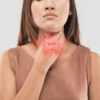How TCM Tongue Diagnosis Uncovers Vital Clues About Your Well-being
In Chinese medicine, the tongue is known as “the mirror of the body,” reflecting the inner landscape of your well-being. Each crack, coating, and hue offers glimpses of imbalances, disharmonies, and potential health issues lurking within. Through the ancient art of tongue diagnosis, skilled practitioners peer beyond the surface to unravel the hidden story inscribed upon your tongue. So, are you ready to embrace this ancient wisdom to cultivate optimal health and inner balance?
THE POWER OF THE TONGUE IN TCM
In Traditional Chinese Medicine (TCM), the tongue is believed to be a microcosm of the body, with different areas corresponding to specific organs and energy meridians. By examining these areas, TCM practitioners gain insights into the health and functioning of various internal organs.
Starting with the tip of the tongue, it is associated with the heart and lung meridians. Changes in color, shape, or texture in this area can indicate conditions related to these organs. For example, a red or swollen tip may suggest heat or inflammation in the heart or lungs.
Moving toward the middle of the tongue, we find the area that corresponds to the spleen and stomach meridians. The condition of this area reflects digestive health. TCM practitioners observe the color, coating, and moisture level in this region to assess the state of the digestive system. For instance, a pale or swollen center may indicate spleen weakness or dampness in the digestive system.
The sides of the tongue are associated with the liver and gallbladder meridians. These areas are examined for signs of imbalances related to these organs. Changes such as a reddish or purplish hue on the sides might indicate liver heat, congestion, or stagnation.
Finally, the back of the tongue corresponds to the kidney and bladder meridians. This area is of particular interest when assessing the state of the body’s water metabolism and reproductive system. TCM practitioners observe the coating, color, and shape of the back of the tongue to evaluate kidney health. For example, a pale or swollen back may indicate kidney weakness or fluid retention.
It’s important to note that TCM tongue diagnosis is a complex and nuanced practice. TCM practitioners consider multiple factors, including the overall appearance of the tongue, changes in color, coating, shape, and other subtle indicators. These observations, when combined with other diagnostic methods, help TCM practitioners develop a comprehensive understanding of the individual’s health and guide them in formulating personalized treatment strategies to restore balance and promote well-being.
7 FACTORS CONSIDERED IN TONGUE DIAGNOSIS
There are seven fundamental factors your practitioner will consider to unravel the hidden messages within your tongue.
1. Tongue Color
The color of your tongue’s body serves as a mirror, reflecting the vitality of your life force, known as Qi (Chee). It provides valuable insights into the overall condition of your blood, organ health, and circulation.
Some common tongue colors include:
- Purplish or darkish: signifies a lack of proper blood flow and could indicate conditions like rheumatoid arthritis.
- Pale: indicates that your body might not have enough heat necessary for efficient digestion, blood circulation, and energy production.
- Bright red: suggests an accumulation of excessive heat within your body.
2. Tongue Shape
Your tongue’s shape mirrors the condition of Yin substances, such as blood (Xue) and fluids (Jin Ye) in your body. For instance, when tooth markings mar the perimeter of your tongue, it hints at digestive disharmony, often culminating in a puffy tongue.
Other noteworthy observations regarding the tongue’s shape are:
- Swollen: suggests the compromised circulation of fluids or blood.
- Hammer-shaped: indicates potential stagnation or accumulation of phlegm and dampness in the body or pathogenic factors obstructing the flow of Qi and fluids.
- Short: is often linked to insufficient Qi and blood circulation, weak digestive function, or a general lack of vitality.
3. Tongue Body Quality
Tongue body quality refers to the overall texture and appearance of the tongue itself. Some examples of specific tongue body qualities are:
- Stiff: suggests a condition of Liver Qi stagnation or Liver Heat, which can cause muscular tension and stiffness throughout the body.
- Cracked: can be associated with conditions such as Yin deficiency, chronic dryness, or gastrointestinal disorders.
- Rolled: is often seen in individuals with a tendency towards Yin deficiency and heat and in conditions involving chronic inflammation or hormonal imbalances.
4. Coat Weight
Coat weight pertains to the density of the coating that covers the tongue’s surface. Various types of coat weights include:
- Thick: can be seen in conditions such as Dampness or Phlegm accumulation, indicating poor digestion or impaired fluid metabolism.
- Thin: suggests a lack of moisture or fluids associated with conditions such as Yin deficiency or chronic dryness.
- Geographic (map-like): signifies underlying imbalances in the body, such as Spleen or Stomach deficiencies or potential sensitivities to certain foods or substances.
5. Coat Color
Coat color relates to the tint or tone of the coating that overlays the tongue’s surface. Several typical coat colors include:
- White: indicates an imbalance of Yin and Yang, cold conditions in the body, or deficiencies in Qi and blood.
- Gray: often points to patterns of Dampness or Phlegm accumulation. It can indicate internal imbalances or impairments in fluid metabolism or cases of chronic illness.
- Black: is often linked with severe imbalances and reflects Heat or Toxicity. It hints at the presence of deep-rooted pathogenic factors and internal organ disorders.
6. Coat Surface
The coated surface encompasses the texture and characteristics of the coating found on the tongue. Here are a few descriptions of different coat surfaces:
- Wet: is often associated with conditions such as Dampness or Phlegm accumulation, poor fluid metabolism, or a weakened Spleen function.
- Dry: suggests a relative deficiency of fluids or Yin in the body. It may also indicate hormonal imbalances or chronic conditions involving fluid loss.
- Greasy: marks issues with digestion, poor fat metabolism, or imbalances in the body’s ability to transform fluids.
7. Tongue Action
Your tongue’s movements offer further clues about your health. For instance, a trembling tongue, characterized by involuntary or slight shaking movements, suggests internal imbalances or disharmonies affecting your body’s energy or organ systems. This quivering motion can reflect various factors, including emotional stress, nervous system disorders, or imbalances affecting the Liver energy.
WHAT A NORMAL TONGUE SHOULD LOOK LIKE
Ideally, your tongue should boast vibrant shades of dark pink or light red. It should effortlessly fit within your mouth (neither puffy nor narrow), devoid of cracks or tooth imprints encircling its edges.
Also, your tongue should be supple and flexible, gently tapering towards its tip. You should see a thin white coating, lending it a pristine appearance. It should appear slightly moist without being overly dry or excessively wet. No swelling or atrophy should be seen.
The Bottom Line
Your tongue hints at what your body needs at any moment, be it more rest, hydration, or other vital requirements. So, embrace the power of tongue diagnosis, and let the wisdom it imparts accompany you on your journey toward optimal health and well-being. If you notice something unusual with your tongue, contact a certified TCM practitioner immediately so you can be guided in making informed decisions about your health.











